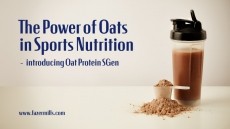Kyowa Hakko to raise European amino acid prices
L-amino acids by ten per cent as of April 1, in an effort to stave
off margin deterioration and ensure long-term availability of the
ingredients.
One of the world's two leading amino acid suppliers (the other being Ajinamoto), the Japanese-owned company supplies all 20 of the common L-amino acids for pharmaceutical and nutraceutical uses. Director of sales and marketing Dietmar Bartschat, PhD, told NutraIngredients.com that the decision to increase prices, after a long period of stability, has several root causes - including increasing production costs which are degrading margins. It is no surprise that one of these is rising energy and petrochemical costs, which are blighting margins across all industries, are part of the equation. L-amino acids are usually produced by fermentation, and raw materials include a carbon source (usually glucose from corn starch or sugar beet); bacteria; and solvents for the downstream process. Increasing demand for amino acids also has a part to play: with a long reputation amongst its customers for supplying high quality product, Bartschat said the company "needs to ensure long availability at acceptable returns for the company". The latest estimate from Frost and Sullivan, a consultancy, valued the European amino acids market at US$1357.7m (€1063.8m) in 2005. The consultancy expects it to grow to around $1944.3m (€1523.4m) by 2012. Bartschat said that reasons for the increasing demand are difficult to pinpoint, since the market is quite diversified. Amino acids used in pharmaceutical drugs, as well used in functional foods, infant nutrition products and food supplements. While Kyowa Hakko counts supplement-makers amongst its European clients, Bartschat said that since the food supplements market in Europe is relatively small compared to other geographic zones for regulatory reasons, its main customer base here is pharmaceutical companies. However in a report published last May, Frost and Sullivan said that health uses will play a major part in this expansion. The development amino acid dimers (two units of amino acids linked by a peptide bond) makes them more suitable for use in foods since they are more stable in aqueous solutions and have superior solubility to than single amino acids. These are "critical parameters in applications such as parenteral and enteral nutrition," according to Frost research analyst V Arthi. Microencapsulation technology was also identified as important for the development of the market - in particular their use in animal feed - since it can prevent the degradation of the nutrients. Bartschat said that the believed Kyowa Hakko's customers will be accepting of the price increase "if they ask us to keep up the quality and supply". In general, however, Kwoya Hakko's prices are going in the opposite direction to those of Chinese competition. For instance, Frost and Sullivan said last year that Chinese price of Arginine was €8 to €10 per kilo, compared to €12 to €13 per kilo from European manufacturers. Faced with such price pressure, seen not just for food and pharmaceutical ingredients but for a whole spectrum of products, leaves Western suppliers setting themselves apart on the basis of quality and supply security. While not wishing to expressedly comment on its competitors' activities, Bartschat said Kyowa Hakko has a 58-year track record in the market and its customers' expect a certain degree of quality and stable availability of the product. The company presently has four amino acid production plans: two in Japan, one in the US and one, opened just last year, in China. The Chinese facility is a joint venture with a Chinese firm. Indeed, forming joint ventures in Asia to distribute products manufactured in low-cost environments was one of the ways Frost and Sullivan said that Western suppliers may be able to better compete on price. Bartschat said that China is an interesting future market, both because of increasing domestic demand and cheaper production costs. While he could only comment directly on the company's European operations, it is likely that parallel increases will also been seen in the US and Asia. "This is not an issue only affecting Europe."











